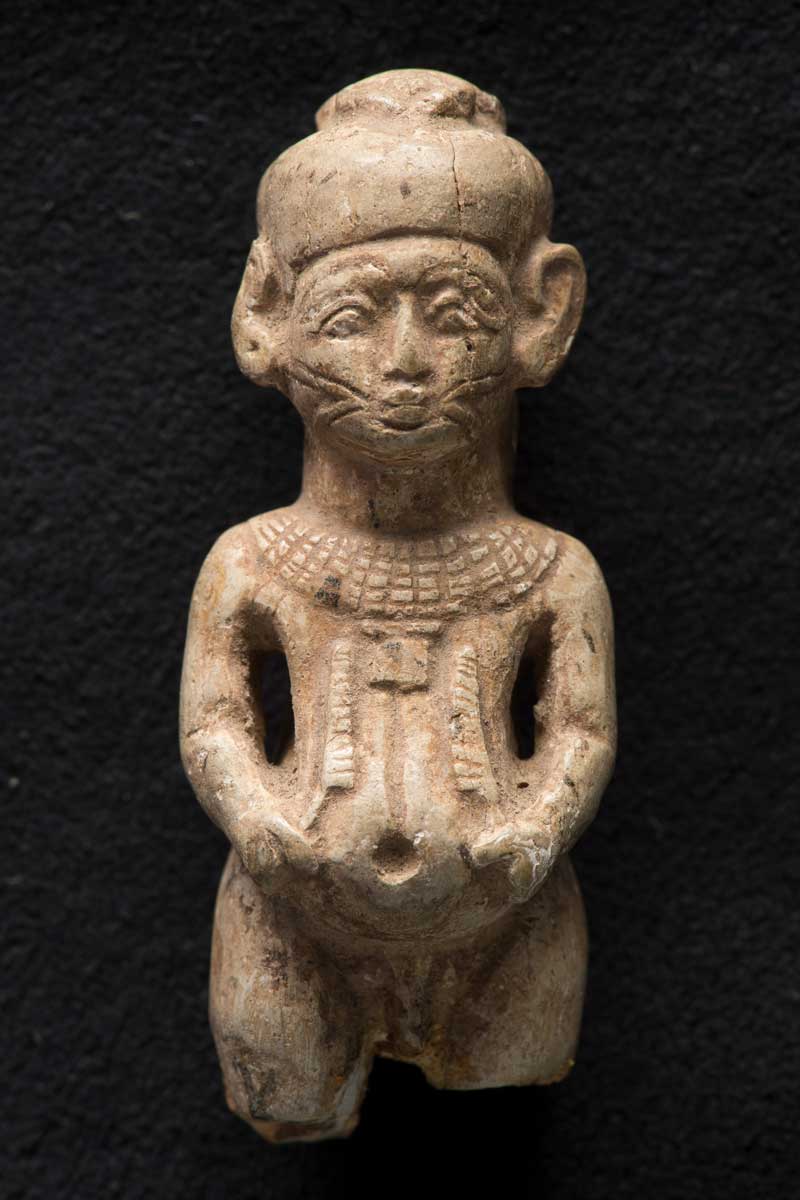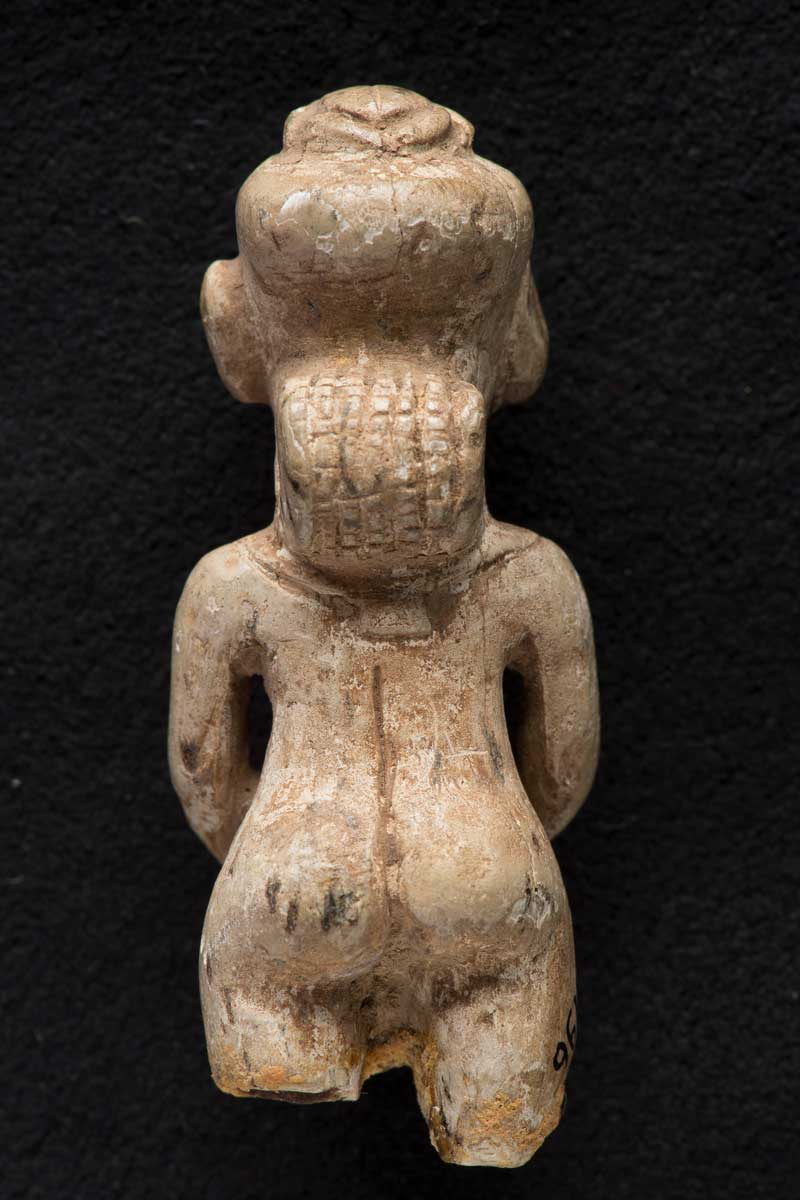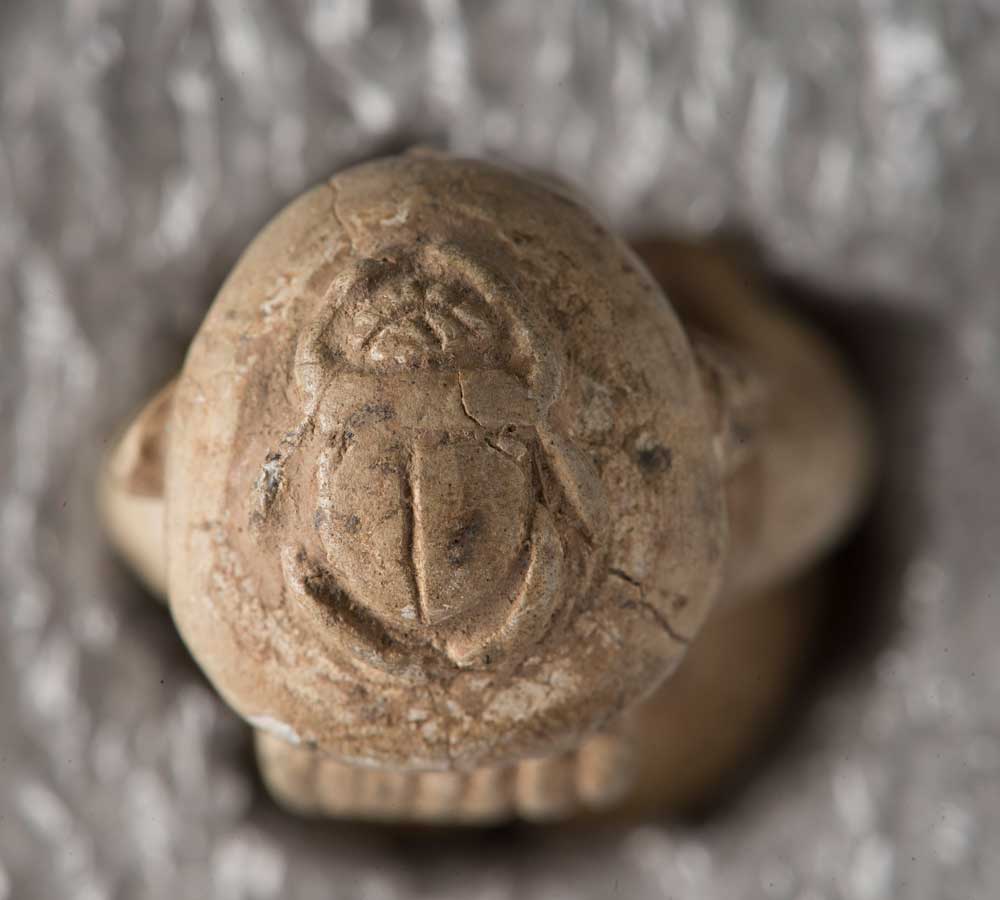Ancient Egyptian Amulets
Pataikos
By Kierra Foley

Accession number: A.196
Measurements: Height: 5.38 cm; Width: 2.2 cm; Thickness: 1.82 cm
Material: Ivory
Date: 25th Dynasty, ca. 747-656 BCE
Provenance: Unknown
Description
This ivory amulet depicts Pataikos. His hands rest on his protruding stomach and each grasps a knife. He is nude except for a necklace, known as a wesekh (broad) collar, with a pectoral in front and counterweight in back; and a fitted headdress, topped with a scarab beetle. His legs have broken away. There is a large suspension loop attached to the back of his neck, adorned with vertical striations. He has three horizontally incised lines on either side of his mouth, likely indicating snakes.


Discussion
The bandy-legged dwarf Pataikos was a phylactic (protective) deity, worshipped in ancient Egypt from the time of the Old Kingdom (ca. 2686-2160 BCE). Amulets of the god are well-attested from the time of the New Kingdom (ca. 1550-1069 BCE). This ivory amulet, which is finely sculpted in the round, likely dates from the 25th Dynasty (ca. 747-656 BCE).
Pataikos was closely associated with Horus-the-Child; the demon god, Aha (literally, “the fighter”); and Aha’s later form Bes (literally, “the guardian”) in both form and function. Despite their diminutive statures, Pataikos and related deities are frequently depicted as subjugators of violent natural forces — most notably, Pataikos is often shown stepping upon and grasping crocodiles, snakes, and scorpions. In this example, he brandishes knives and holds three snakes in his mouth, apparently consuming them. These behaviors show his fitness to ward away malevolent forces. Likewise, Horus-the-Child is shown in this manner on small ritually charged stele called cippi by Egyptologists. Phylactic amulets depicting protective deities like Pataikos, Horus-the-Child, and Bes were used by those who wore them to ward away evils that could cause illness, injury, or misfortune. This particular depiction of Pataikos specifically has a strong association with the celestial falcon Horus through the scarab beetle that adorns his cap, a solar symbol.
It has been suggested that Pataikos is a manifestation or son of Ptah, a god of craftsmen. Writings by the Greek historian Herodotus state that Ptah was depicted in the form of a dwarf, and the name “Pataikos” that he coined literally means “little Ptah.” Dwarves often worked in workshops as craftsmen, as attested in tomb scenes from Egypt.

References
Andrews, Carol, 1994. Amulets of Ancient Egypt. Texas: University of Texas Press. 39.
Györy, Hedvig, 2002. “Changes in Styles of Ordinary Pataikos Amulets.” In Egyptian Museum Collections Around the World, edited by Zahi Hawass, Mamdouh Mohamed Eldamaty, and May Trays. Cairo: Supreme Council of Antiquities. 491-502.
Minas-Nerpel, Martina, 2013. “Ptah-Pataikos, Harpokrates, and Khepri.” In Decorum and Experience: Essays in ancient culture for John Baines, edited by Elizabeth Frood and Angela McDonald. Oxford: Griffith Institute. 147-50.
Ritner, Robert K., 1989. “Horus on the Crocodiles: a Juncture of Religion and Magic in Late Dynastic Egypt.” In Religion and Philosophy in Ancient Egypt, edited by William Kelly Simpson. New Haven: Yale University Press. 103-16.